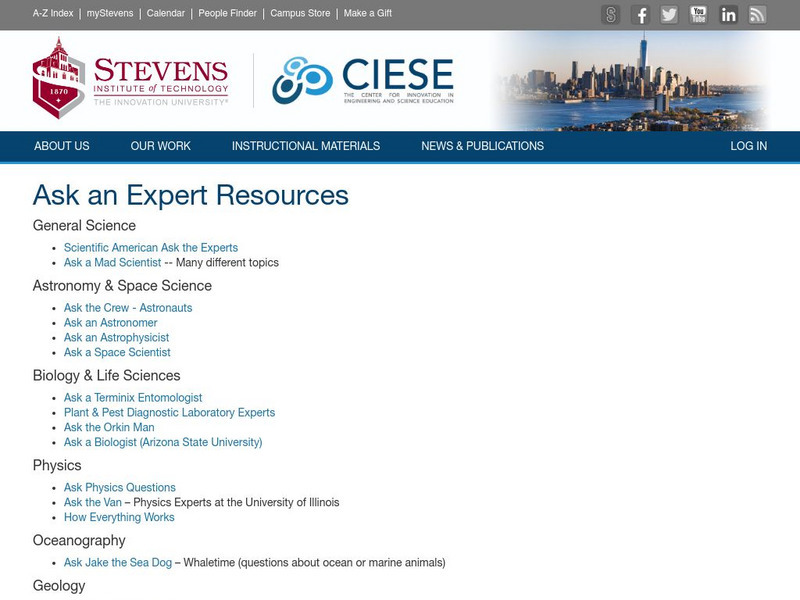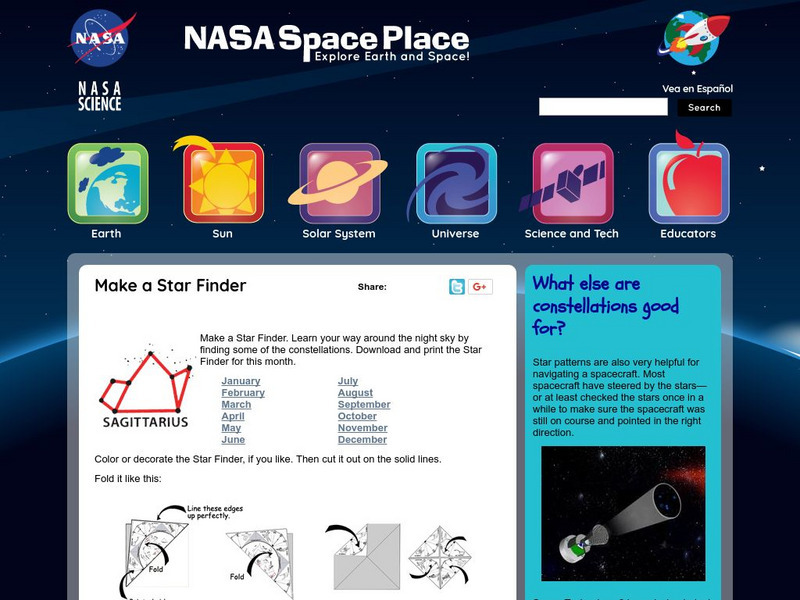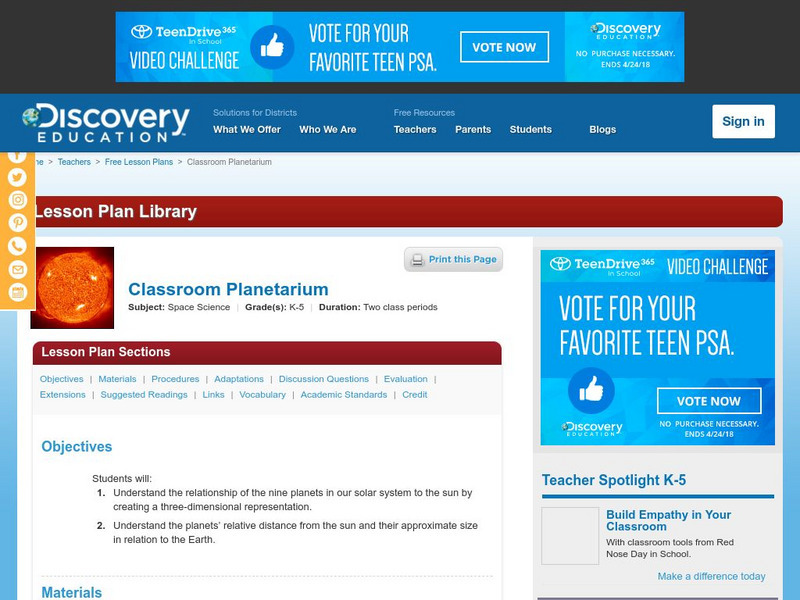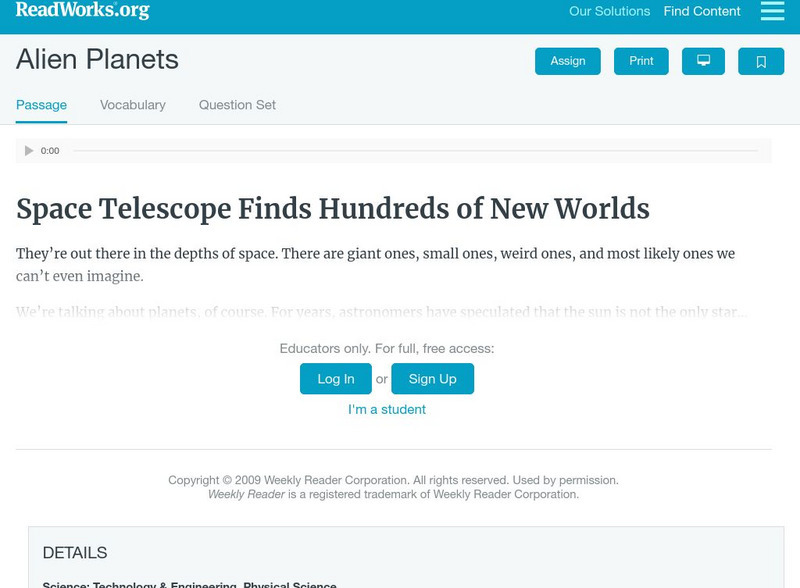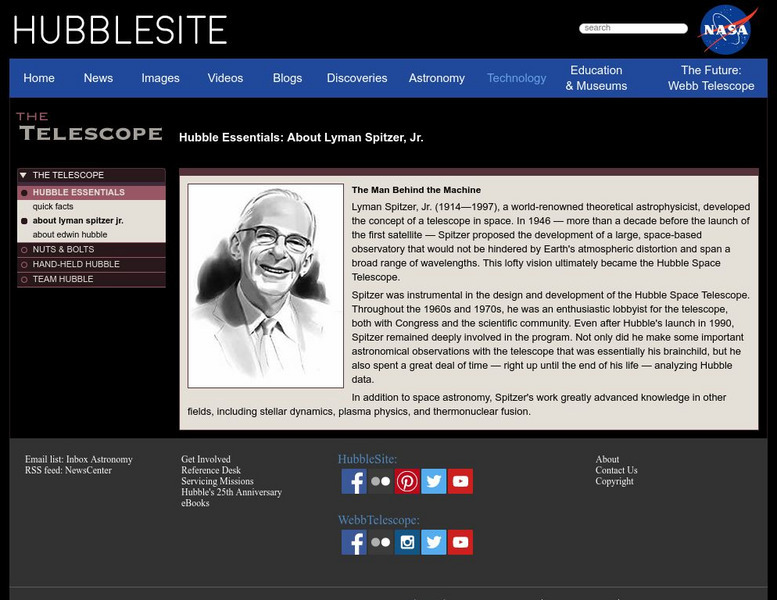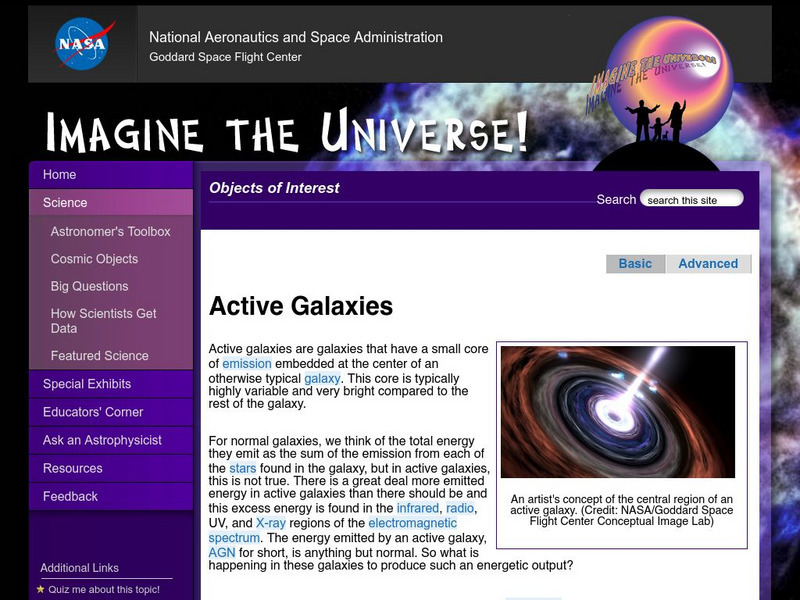Center for Innovation in Engineering and Science Education, Stevens Institute of Technology
Ciese: Educational Links: Ask an Expert Sites
Ever wondered about, well, anything? Get your burning question answered here from reigning experts in General Science, Astronomy and Space Science, Biology and Life Sciences, Physics, Oceanography, Geology, Weather, and Health.
California Institute of Technology
Cal Tech: Two Micron All Sky Survey
Learn about the Two Micron All Sky Survey project, in which telescopes and observatories scan the sky for infrared radiation in order to learn more about the Milky Way galaxy. The infrared spectrum is described and its importance to...
Cosmo Learning
Cosmo Learning: Modern Physics: Cosmology
A collection of video lectures from a cosmology course taught at Stanford University. The course gives an overview of the universe as a whole while focusing on astrophysics, physics, and astronomy in eight lectures. Lectures vary in length.
California Institute of Technology
Welcome to Cool Cosmos!
Site provides a cosmic classroom, an image gallery, science resources, fun and games, and much more!
Wolfram Research
Wolfram Science World: Science World of Astronomy: Snc Meteorites
View a chart displaying various kinds of meteorites collected on earth and read a technical article describing the manner in which they are studied. Provides a link to more information about the planet Mars and the role it plays in the...
PBS
Pbs Teachers: Scientific American: Science in Paradise: Big Dish
Investigate the science of radio astronomy, and create a model of a curved reflecting dish that will work like the Arecibo detector to detect electromagnetic waves. Explore risk using a risk space grid.
NASA
Nasa: Make a Star Finder
Learning game and activity that teaches about the constellations by making a star finder to help locate them.
American Association of Physics Teachers
Com Padre Digital Library: Physics to Go: Explore Physics on Your Own
Contains a full physics curriculum with links to games, webcasts, and activities. By creating a free account, students and teachers can create their own personal collection of resources.
Utah Education Network
Uen: Moon Light Through the Month
In this lesson, students are asked to order cards showing different phases of the moon. Includes student handouts.
Cosmo Learning
Cosmo Learning: Introduction to Astrophysics
A collection of audio lectures from an introduction to astrophysics course taught at the University of California, Berkeley. The course discusses the solar system, stars, quantum mechanics, gravitation, and cosmology focusing on how...
NASA
Nasa: For Educators
Contains many links to projects and workshops, as well as educational resources.
Space Telescope Science Institute
Hubble Site: Edwin Hubble
At this site from HubbleSite provides information on how Edwin Hubble (1889?1953 CE) made some of the most important discoveries in modern astronomy. Learn about them as well as the invention of the Hubble Space Telescope. Open 'Who was...
Other
Paper Plate Education: Serving the Universe on a Paper Plate
Excellent resource for "paper-plate" activities that help simplify various astronomy topics. Learn how to build a "Moon Finder" and "Planet Pointer," and create a paper-plate model that explains the Transit of Venus.
NASA
Viewing the Violent Universe: What Are Gamma Rays?
The universe produces a broad range of light, only a fraction of which is visible to our eyes. Gamma rays are nonvisible light, which also includes x-rays, ultraviolet light, infrared radiation, and radio waves.
Discovery Education
Discovery Education: Classroom Planetarium
Create a classroom model of the solar system while teaching about relative size of all the planets, and each planet's distance from the sun.
National High Magnetic Field Laboratory
Magnet Academy: John Daniel Kraus
For a man whose career involved the entire known universe, John Kraus had a remarkably insular upbringing. He was born and raised in Ann Arbor, Michigan, and earned his bachelor's, master's and doctoral degrees in physics, all at the...
California Institute of Technology
Ipac: Iras Gallery
This site from IPAC is a series of images of various celestial objects and regions as viewed in infrared light. Each photo is accompanied by a caption.
Curated OER
Science Kids: Science Images: Satellite Dish
A photo of two huge satellite dishes aimed into space that are used for research in the field of space and astronomy.
Read Works
Read Works: Alien Planets
[Free Registration/Login Required] This nonfiction piece discusses the discovery of previously unknown planets in the solar system. This passage is a stand-alone curricular piece that reinforces essential reading skills and strategies...
Space Telescope Science Institute
Hubble Site: Lyman Spitzer Jr.
At the HubbleSite you can learn about Lyman Spitzer's (1914?1997 CE) inventions and accomplishments in the science field.
NASA
Nasa: History of Venus Transit
NASA site recounts the history of the Venus Transits that have occurred over the past centuries and the various descriptions astronomers have written about them.
NASA
Nasa: Imagine the Universe: Supernovae (Basic)
A detailed description of a supernova developing from a single massive star. There is a quiz, related links, animation, lesson plans, and an FAQ sheet available also.
NASA
Nasa: Imagine the Universe: Active Galaxies and Quasars
Describes quasars as being classified within the category of an active galaxy. A description of the emergence of high-energy. Definitions of key words are provided.gamma-ray quasars as an important component of the gamma-ray sky.
NASA
Nasa: Imagine the Universe: Supernovae Remnants
A brief description of supernova remnants with many embedded links to help define terms used in the description. The specific topics are age and the importance of remnants to us and the types. Definitions of key words are provided.


